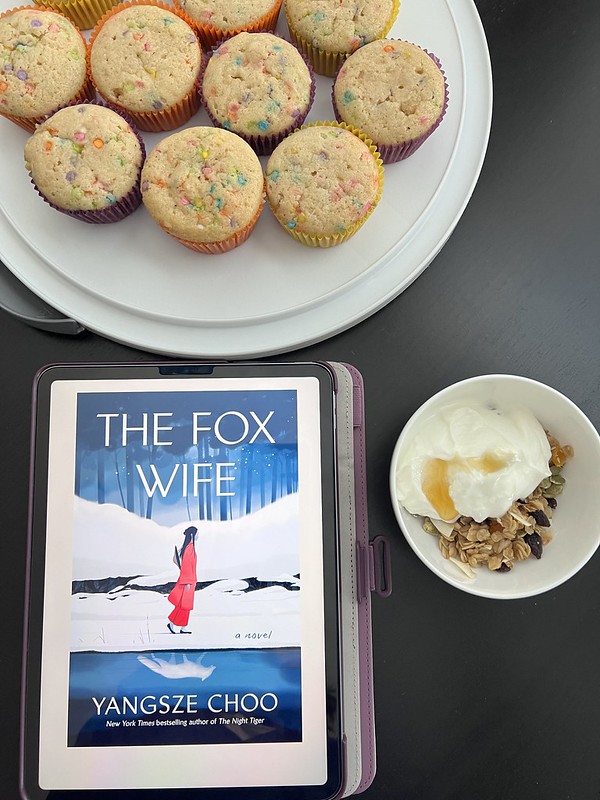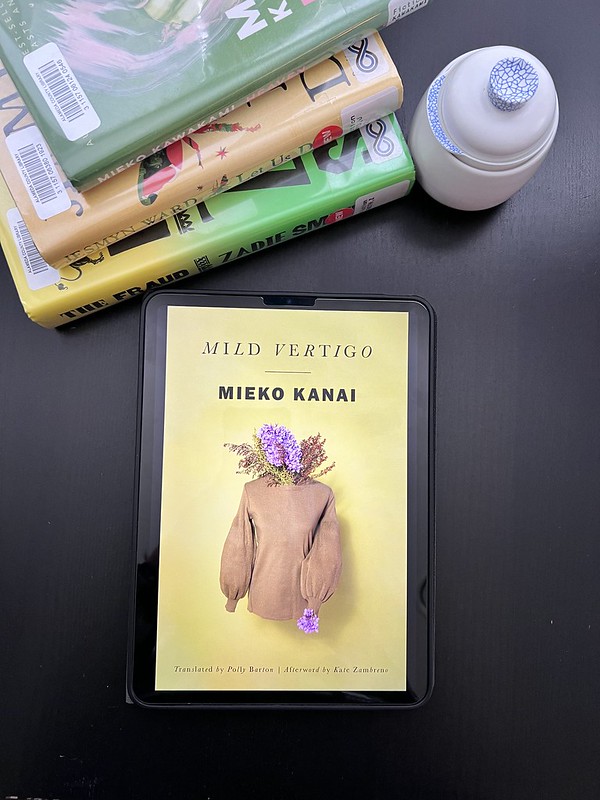Once, when I lived in the seaside town of Brighton, England, a fox strolled past me on the street. It was at night, and I was with friends along the walkway that overlooks the beach. The fox trotted nonchalantly past us and the rest of the people out haunting the streets that night. It disappeared from my view shortly after, and while our encounter was fleeting, it has never left my memories.
Foxes have long been seen as tricksters in various cultures. In Chinese culture, which is what I’m most familiar with, 狐狸精 or hulijing (fox spirit) are shapeshifters, depicted sometimes as both good and evil, not quite god or demon. This is similar to the kitsune and gumiho myths in Japanese and Korean cultures too.
But back to The Fox Wife. Yangsze Choo, who is from Malaysia, has written other Asian mythology-related books, The Ghost Bride and The Night Tiger. Both books I would highly recommend! So I went into this full of expectations, and I was not disappointed.
The Fox Wife is a beautifully subtle, atmospheric book. It is essentially a tale of revenge, for Snow, a fox who has shapeshifter into a woman, is hunting down the man who killed her child. It is also the tale of Bao, a detective of sorts. He has this strange ability to tell when others are lying. And he’s investigating the death of a young woman who was found outside a restaurant in the cold. The restaurant owner wants Bao to find out her name, so that proper prayers can be said and that she can be put to rest.
“This case, with its overtones of foxes and lost girls, fills Bao with strange urgency. He has the uneasy sensation that he’s walking into a shadowy realm. No longer a child, he’s an old man now, setting out into an unknown forest of lies an half-truths.”
Snow, as the title gives a big hint to, is a wife. She has a husband and that husband is later revealed in the book. And I can’t help but think back to this point that Snow makes early on in the first chapter:
“…though most tales focus on the beautiful female foxes who live by devouring qi, or life force, little is said about the males. Women who run around wilfully doing whatever they please are bound to be censured. A handsome, cunning man is a different matter.”
So while we expect a tale of cunning and misdeeds from Snow, in reality, it is not that easy, not as a young woman in Asia in the early 1900s. For instance, traveling alone as a young girl attracts unwanted attention, and she manages to get on a train by following a pimp. Later, she finds work as a servant in a rich household that owns a traditional medicine shop.
While Snow’s is the main story, Bao’s is told in alternating chapters, and it feels like a cat and mouse game as he traces her steps and catches up to her. Bao’s story is an intriguing one, and we are told much of it through his childhood memories, his own encounters with foxes as a child, and his mysterious abilities – and what is happening to his shadow? When I first saw his name, Bao, I immediately thought of the legendary character Bao Gong (Justice Bao), who apparently was a real-life man from China (born in the year 999), but who many know from wuxia stories, Chinese mythology, or maybe it was the 1990s TV series. Bao Gong is known for his fairness and bringing bad guys to justice.
Despite the whole murder-mystery element of the story, this is a book without that kind of urgency that some readers might expect. It takes its time to build up the encircling stories of Snow and Bao, but I thoroughly enjoyed the way Choo edges the gaps between them closer and closer. Their stories were artfully woven together in a satisfying and beautiful tale.










